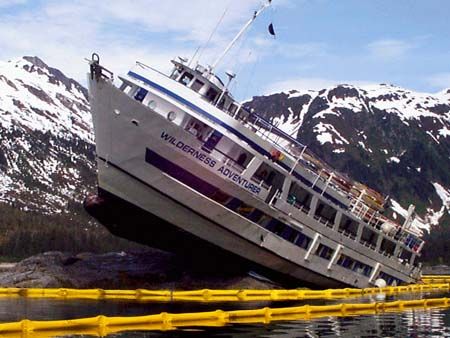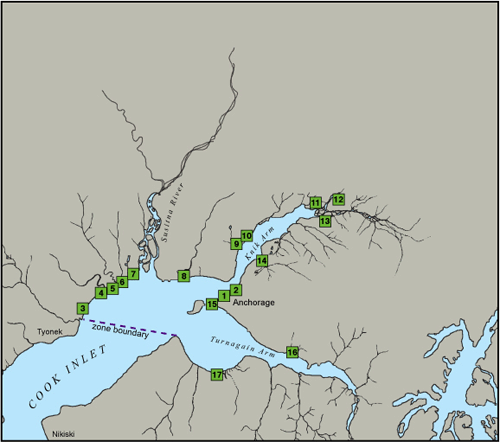GRS Site Selection Process

The Geographic Response Strategy (GRS) site selection process begins by identifying candidate sites. At a minimum, this involves consultation with: residents of nearby communities, natural resource managers, oil spill response professionals, industry representatives, and regional citizens’ advisory council members, where appropriate.
3 major criteria
Candidate sites are identified based on the following three criteria.
- environmental sensitivity;
- risk of being impacted from waterborne spills; and
- feasibility of successfully protecting the site with existing technology.
Site Selection Matrix
Potential GRS locations are placed into a Site Selection Matrix and ranked based on the following criteria, which are described in the applicable Area Plan.
- Proximity to threatened or Endangered Species/Habitats
- Subsistence Harvest Areas
- Marshes
- Eelgrass beds
- Sheltered Tidal Flats
- Sheltered Rocky Shores
- Seal Haulouts
- Sea Lion Rookeries and Haulouts
- Walrus Rookeries and Haulouts
- Large Seabird Colonies
- Waterfowl and Shorebird Spring, Fall, or Winter Concentration Areas
- Large Anadromous Fish Streams
- Intertidal Salmon Spawning Areas
- Herring Spawning Areas
- Federal Wilderness Areas, Wild and Scenic Rivers, and National Natural Landmarks
- State Refuges, Sanctuaries, and Critical Habitat Areas
- Cultural Resources/Archaeological Sites
- Intertidal Sites
- High Use Commercial Fishing Areas
- High Use Recreational Areas
When funding becomes available after site selection ranking is complete, a tactics and operations group is formed to develop protective strategies for each site. After draft strategies are developed, they are available on the Draft GRS webpage for public review.
Feedback is always welcome and is actively sought. Public involvement is essential to ensure sites and strategies reflect the environmental protection priorities of local communities, stakeholders, and resource users, who are encouraged to participate in the selection and development process. If you have questions, comments, or want to get involved, please contact us at dec.spar.grs@alaska.gov.


 Indicates an external site.
Indicates an external site.